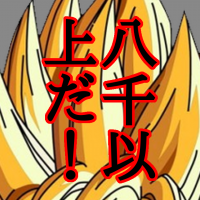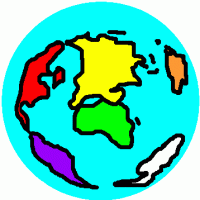Съобщения: 19
Език: English
sudanglo (Покажи профила) 08 август 2018, 11:20:01
If you see the notice before you look for the flags you might think that one flag is red and the other yellow. However both flags are red and yellow.
I think that you can guess what my question is.
nornen (Покажи профила) 17 август 2018, 17:48:40
A red flag on one side and a yellow flag on the other side (not the case at Ramsgate): inter la ruĝa kaj la flava flago.
Several red flags on one side and several yellow flags on the other (not the case at Ramsgate): inter la ruĝaj kaj la flavaj flagoj.
One yellow-red flag (striped, chequered, gules a chevron or) on one side and another identical flag on the other side: inter la flavruĝaj flagoj.
Several yellow-red flag (striped, chequered, or a snow crystal gules a chief fir tree topped also gules) on one side and several identical flags on the other side: inter la flavruĝaj flagoj.
Always correct: inter la flagoj.
sudanglo (Покажи профила) 21 август 2018, 11:56:59
A red flag on one side and a yellow flag on the other side (not the case at Ramsgate): inter la ruĝa kaj la flava flago.Nornen I would say that that case in Esperanto is inter la ruĝa kaj flava flagoj
One yellow-red flag (striped, chequered) on one side and another identical flag on the other side: inter la flavruĝaj flagojFor me flavruĝa means a certain shade of red - a yellowish red, just as brunruĝa would be a brownish red.
nornen (Покажи профила) 21 август 2018, 14:40:54
sudanglo:It seems to me that Esperanto is a bit instable with this kind of constructions. Taken from the tekstaro:A red flag on one side and a yellow flag on the other side (not the case at Ramsgate): inter la ruĝa kaj la flava flago.Nornen I would say that that case in Esperanto is inter la ruĝa kaj flava flagoj
inter la nova kaj la plena luno (singular)Now you piqued my interest about how this type of construction is expressed in English. Let's suppose, for argument's sake, that in Ramsgate all houses are unicolour. All houses except two are white, one is red and one is yellow. Your house is located square in the middle of the two non-white houses. Which one is correct to say?
inter la 9a kaj la 13a jarcento (singular)
inter la dika kaj la montra fingroj (plural)
inter la 13a kaj la 16a jarcentoj (plural)
inter la 10a kaj la 16a horoj (plural)
Zamenhof: Ĉe la dua kaj la tria rifo (singular)
A) I live between the red and yellow houses. (inter la ruĝa kaj la flava domoj)
B) I live between the red and the yellow house. (inter la ruĝa [sc. domo] kaj la flava domo)
C) I live between the red house and the yellow one. (inter la ruĝa domo kaj la flava [sc. domo] )
How about this?
D) The beaker culture arrived in Britain between the 26th and the 24th centuries BCE.
E) The beaker culture arrived in Britain between the 26th and the 24th century BCE.
F) The beaker culture arrived in Britain between the 26th and 24th centuries BCE.
G) The beaker culture arrived in Britain between the 26th and 24th century BCE.
sudanglo:No doubt that flavruĝa can mean "yellowish red" (and I guess it generally will mean exactly this). However, this does not prevent us from interpreting it as "yellow-red" in this special case. The sign tells us to look out for flavruĝaj flags and when we fail to spot a yellowish red flag, perhaps we come to the conclusion that the yellow and red ones are the flavruĝaj ones. Maybe "inter la flavaj-ruĝaj flagoj" is more agreeable to you.One yellow-red flag (striped, chequered) on one side and another identical flag on the other side: inter la flavruĝaj flagojFor me flavruĝa means a certain shade of red - a yellowish red, just as brunruĝa would be a brownish red.
Also the simplest "inter la flavaj kaj ruĝaj flagoj" works just fine. As soon as we fail to spot yellow flags and red flags, but only see yellow flags with red polka dots, we should be able to infer, that those are the
Altebrilas (Покажи профила) 21 август 2018, 15:34:35
In french, one would say; "nagez entre le drapeau rouge et le jaune" in one case, "nagez entre les drapeaux rouge et jaune" in the other. I think it is the same in Esperanto:
Naĝu inter la ruĝa flago kaj la flava
Naĝu inter la flagoj ruĝa kaj flava
Of course, if you have to design the flags, a few more heraldic details are needed.
thyrolf (Покажи профила) 21 август 2018, 21:43:05

Kantoj14 (Покажи профила) 22 август 2018, 10:37:14
Altebrilas:Naĝu inter la ruĝa flago kaj la flavaI like the first option here and at first glance the second one looked like it broke the matching-endings rule for adjectives and nouns, but I guess technically it would be correct - as long as there is only one of each. I still feel like it's off, though. Might just be me. It's clear what you mean either way, so I support it!
Naĝu inter la flagoj ruĝa kaj flava
If there were multiple flags of each color though (like multiple red on one side and multiple yellow on the other), then it could still follow the first option's format, but the second option would become Naĝu inter la ruĝaj kaj flavaj flagoj, which can apply to either situation - just like the english version that started this confusion.
Kantoj14 (Покажи профила) 22 август 2018, 10:39:20
sudanglo (Покажи профила) 23 август 2018, 13:25:29
It seems to me that Esperanto is a bit unstable with this kind of construction. Taken from the tekstaro:Interesting piece of research, Nornen
inter la nova kaj la plena luno (singular)
inter la 9a kaj la 13a jarcento (singular)
inter la dika kaj la montra fingroj (plural)
inter la 13a kaj la 16a jarcentoj (plural)
inter la 10a kaj la 16a horoj (plural)
Zamenhof: Ĉe la dua kaj la tria rifo (singular)
However, the usage may not be so unstable as you suggest. It seems to me that a simple rule has been applied in most of these cases.
If there is more than one of the noun then plural, if not, then singular - logical
For example, the reference is to the same moon, so inter la nova kaj la plena luno singular
On the other hand, the reference is to different fingers, so inter la dika kaj la montra fingroj plural
As regards the solution for lifeguard monitored area of the beach at Ramsgate, I think I prefer
Inter la ruĝa-flavaj flagoj, leaving ruĝflava to refer to a particular shade of yellow
Kantoj14 (Покажи профила) 24 август 2018, 11:14:47



